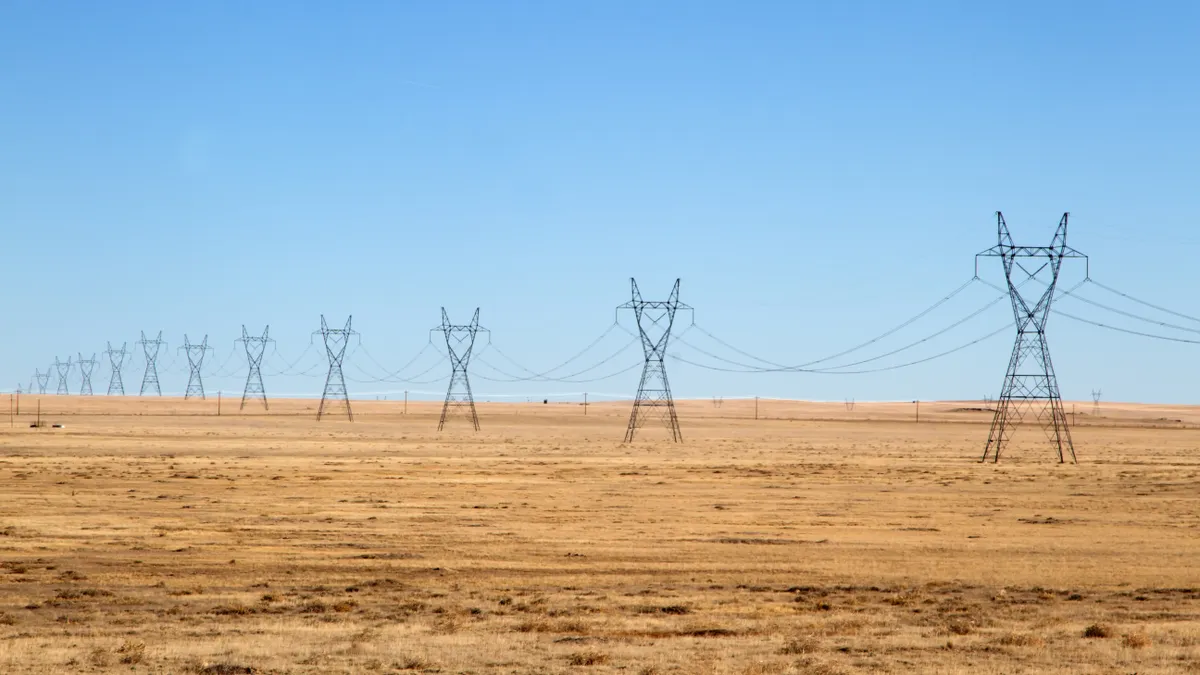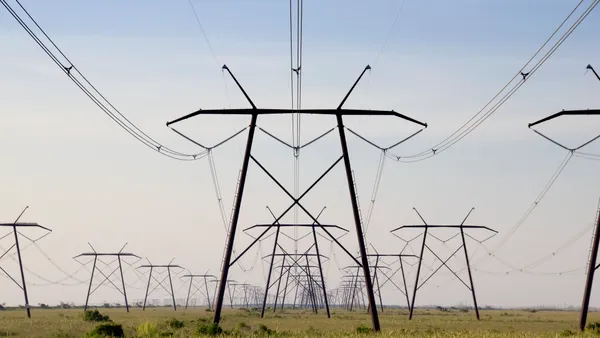Dive Brief:
- Sen. Martin Heinrich, D-N.M., on Thursday proposed a 30% investment tax credit for “regionally significant” transmission projects that cross at least two states or extend 150 miles, as well as grid-enhancing technologies, subcomponents and other projects.
- Rep. Steven Horsford, D-Nev., will introduce a companion bill in the House. The Grid Resiliency Tax Credit Act would provide a 10-year credit for projects that begin construction before the end of 2033.
- The need for additional transmission was a major topic at a Thursday hearing of the Senate Committee on Energy & Natural Resources. “Large multi-state transmission lines are needed for reliability, but they are rarely getting built,” Chairman Joe Manchin, D-W.Va., said.
Dive Insight:
A 30% investment tax credit for large transmission projects could spur integration of an additional 30,000 MW of new renewables, according to research from the American Council on Renewable Energy.
A transmission investment tax credit will improve grid reliability, generate savings for consumers “and provide developers with the long-term certainty they need to invest,” ACORE said in a statement supporting Heinrich’s legislation. The bill “will unlock tens of thousands of megawatts of wind and solar now stuck in interconnection queues.”
Projects qualifying for the transmission ITC could include overhead, underground or offshore infrastructure including:
- New transmission lines moving at least 750 MW and and 345 kV in capacity, or at least 100 kV for lines that include an advanced transmission conductor;
- Projects that increase transmission capacity of an existing line by at least 500 MW;
- Generator interconnection tie-lines that are at least 230 kV.
Investments in certain subcomponents could also qualify for the credit, as well as grid-enhancing technologies on new and existing transmission facilities.
“We are going to need to invest in building many more transmission lines,” Heinrich said. Difficulties in building new transmission was a major topic at Thursday’s’ ENR committee meeting on grid reliability.
“We need to cut the red tape on permitting on all generation, transmission and pipeline projects,” said David Tudor, CEO and general manager of Associated Electric Cooperative, a Midwest power supplier.
“Because the low carbon future requires significant investment in electric transmission and other energy infrastructure, we must break the back of the infrastructure siting challenge,” Jim Robb, president and CEO of the North American Electric Reliability Corp., told the committee.
Some permitting reforms were included in a bipartisan debt limit bill passed this week by the House and Senate.
“Excessively long permitting processes are keeping us from bringing any new generation resources online in a timely fashion,” Manchin said. He plans to bring a comprehensive permitting reform bill for a vote before August, but Republicans have also proposed their own reforms.
Sen. John Barrasso, R-Wyo., noted he and other Republicans were supporting the Spur Permitting of Underdeveloped Resources Act to increase domestic energy and mineral development and streamline infrastructure permitting.
“We need to have a reliable electric grid. That means generating more, not less, reliable and available, affordable power,” Barrasso said. “The transmission line without reliable and available electricity is like a stream bed without water flowing through it.”














